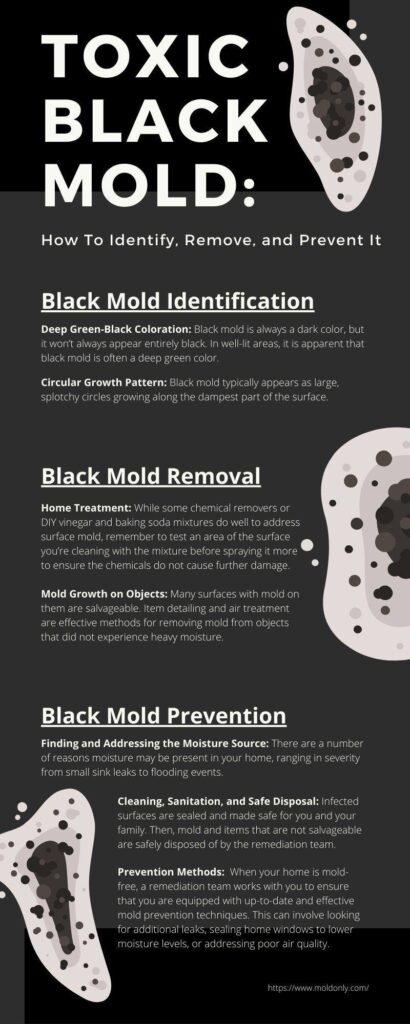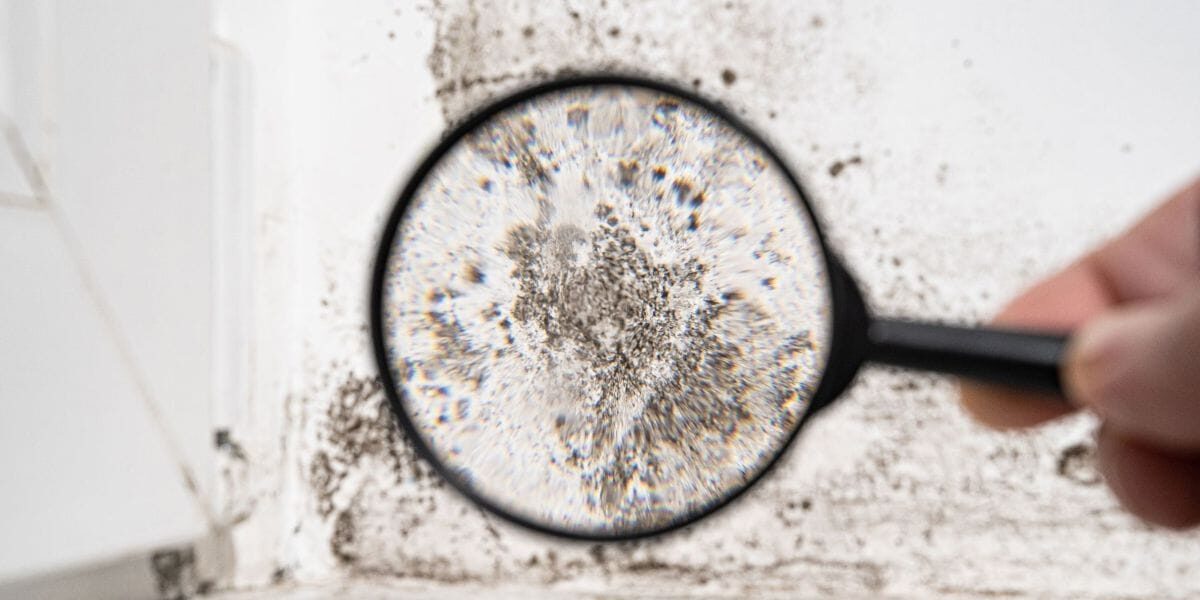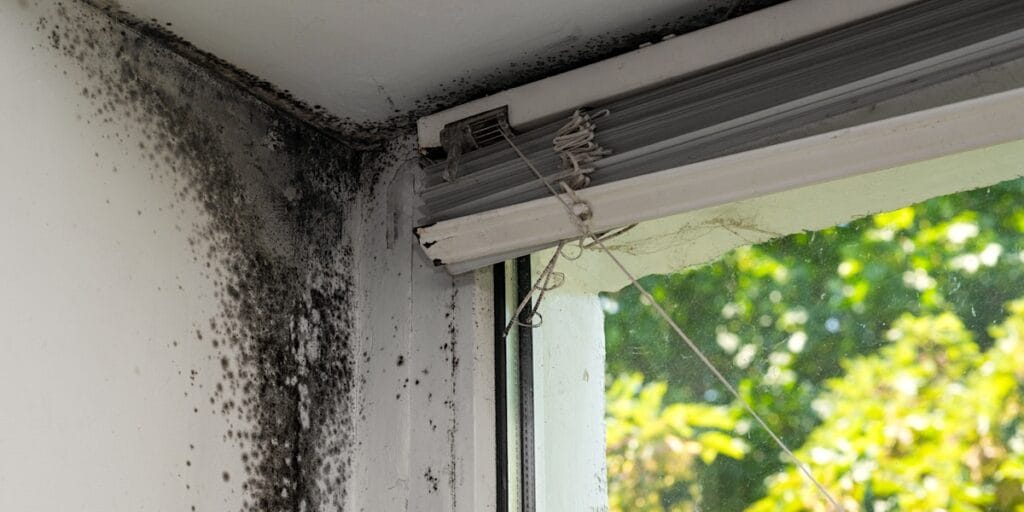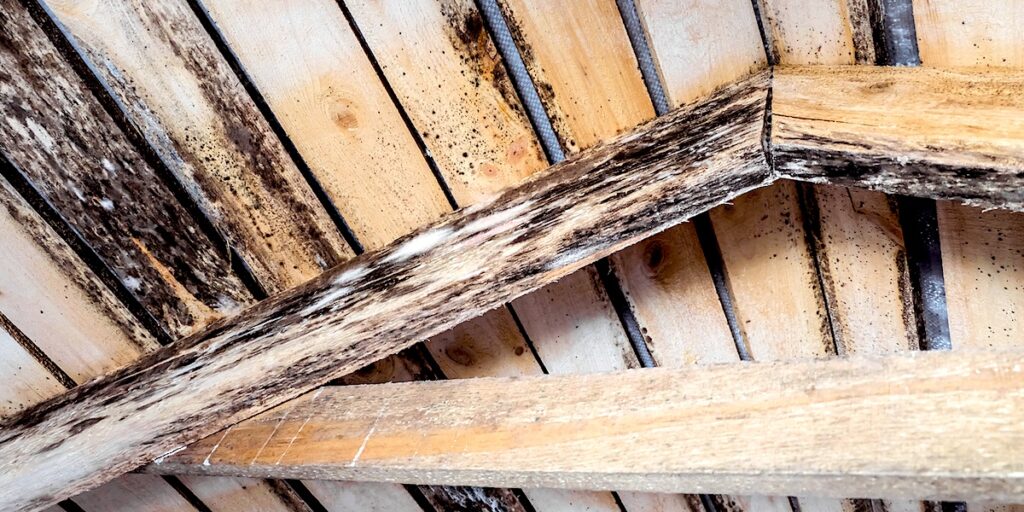Black mold is visually distinct, comes with a potent scent, and screams out “Danger!” to all those who see it in their houses. Let’s discuss how to identify, remove, and prevent toxic black mold. Below, we’ll address some truths and myths regarding the danger of black mold in your home.
What Is Black Mold?
Black mold, also known by its scientific name Stachybotrys chartarum, is a common household mold in the United States. Known for its greenish-black color, like most molds, it appears in damp, high-humidity environments. Black mold is especially fond of cellulose and thus grows best on paper or fiberboard. If you’re in South Florida where mold is prevalent due to the very humid climate, then be aware that black mold can flourish here.
Why Is Black Mold “Toxic”?
At Mold Only, we believe in being honest with our customers. If you see what you believe is black mold in your home, don’t panic. Black mold is referred to as “toxic” after the CDC questioned if the mold was the cause after reviewing a situation in 1995 where infants in moldy homes were diagnosed with a similar sickness.
Despite finding out that the mold wasn’t the issue causing the infants to get sick, the media of the time ran with it. However, today, we still associate S. chartarum with something deadly. To this day, even the CDC still says that a link between acute idiopathic pulmonary hemorrhage in infants and black mold does not exist.
So, Is Black Mold Dangerous?
We encounter mold spores constantly throughout our day. Mold becomes more than an unsightly home problem when the spore count is high enough to begin causing irritation. Unlike a deadly poison, black mold spores are an irritant that leads to allergy-like symptoms, fatigue, or headaches.
While it is always best to address mold when it appears, the urgency to remove and remediate black mold situations comes when family members have breathing problems like asthma or severe mold allergies. If these symptoms affect small children, they should remain outside of high spore count environments until mold remediation specialists resolve the mold situation.
Black Mold Identification
Black mold is iconic due to its infamy. Here are a couple of ways to identify black mold quickly visually.
Deep Green-Black Coloration
Black mold is always a dark color, but it won’t always appear entirely black. In well-lit areas, it is apparent that black mold is often a deep green color. As it appears initially, the mold may look like more of a dusty grey until it establishes itself. What surface the mold is growing on and how moist it is impacts the coloration.
Circular Growth Pattern
Black mold typically appears as large, splotchy circles growing along the dampest part of the surface. It’s important to know that each case of black mold looks somewhat different and that black mold can also be present alongside other mold types.
Any suspected black mold needs to be tested to confirm its species, however.
Black Mold Removal
Professional black mold removal services are a wonderful place to start once the mold in your home is spotted and identified. Here are some things to consider about mold removal as you seek out a specialist for later remediation:
Home Mold Treatment
If you see mold in your home, you do have options for removing it then and there. The first step is to wear proper protection, including gloves, goggles, and a respirator as you get close to and interact with the mold.
While some chemical removers or DIY vinegar and baking soda mixtures do well to address surface mold. Remember to test an area of the surface you’re cleaning with the mixture before spraying it more to ensure the chemicals do not cause further damage.
Mold Growth on Objects
Addressing black mold in the home may mean having to deep clean or throw away some affected objects. Paper, such as photographs and documents, cannot have mold cleaned off them in a way that isn’t further damaging. Instead, take digital pictures of these objects and toss them. Stuffed animals, fabrics, and other affected porous surfaces are also difficult to save and are best discarded.
However, many surfaces with mold on them are salvageable. Item detailing and air treatment are effective methods for removing mold from objects that did not experience heavy moisture.
Black Mold Prevention
Removal is not the end of the story for toxic black mold once it appears in your home. Consider the fact that mold does not grow only on the surfaces you can see. It’s also important to address the issues which allowed mold to thrive in your home, such as leaks or faulty downspouts. Remediation takes the following steps not just to remove the mold you can see, but also to help prevent mold growth in the future.
Testing for Black Mold
To most efficiently address black mold growth in your home, remediation specialists start by testing the mold currently present there. By sampling surfaces and air, remediation teams offer you a better picture of what fungus is growing and what steps need to be taken.
Finding and Addressing the Moisture Source
Mold can return after removal if the moisture source that allowed it to grow in the first place isn’t tackled. There are a number of reasons moisture may be present in your home, ranging in severity from small sink leaks to flooding events. Your mold remediation team works quickly to not only find the source of the issue when it’s unknown. However, they also work to solve the problem and get the moisture out of your home.
Isolating the Mold
A small but important touch in mold remediation is mold isolation. Mold spores enter the air quickly and can spread to other rooms, into your air ducts, and into your lungs when you breathe. Remediation specialists who isolate the mold ensure that spores are contained and removed entirely as the mold is addressed.
Cleaning, Sanitation, and Safe Disposal
Once the mold is physically removed, a remediation team cleans and sanitizes the entire space in which the mold was present. This makes it harder for it to appear there again. Infected surfaces are sealed and made safe for you and your family. Then, mold and items that are not salvageable are safely disposed of by the mold remediation team.
Black Mold Prevention Methods
Finally, when your home is mold-free, a professional mold remediation team works with you to ensure that you are equipped with up-to-date and effective mold prevention techniques. This can involve looking for additional leaks, sealing home windows to lower moisture levels, or addressing poor indoor air quality.
Keeping your home’s air and surfaces safe from toxic black mold means understanding how to identify, remove, and prevent it. However, mold is bound to appear in humid environments, and we want to remind you that it’s nothing to be ashamed of if it does. Our team at Mold Only is happy to offer thorough and affordable mold remediation services in South Florida. We do this passionately so that our neighbors can breathe better and sleep easy – knowing that mold is no longer an issue for them.

We guarantee our mold remediation service work at the best price. Call Mold Only today for a free estimate.





